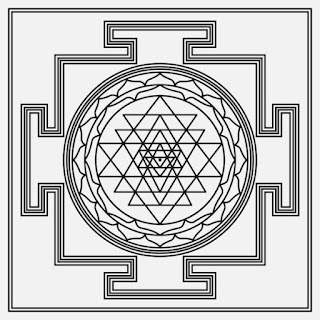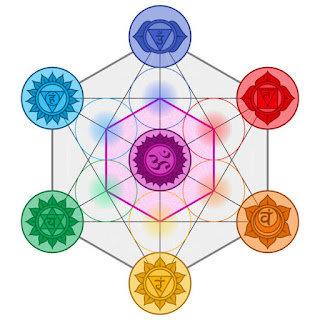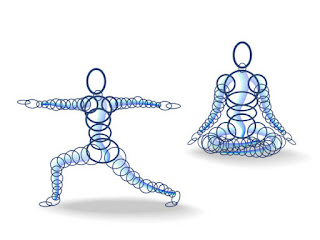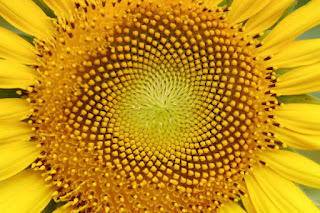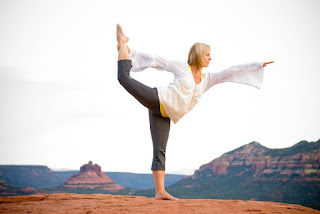Sacred Geometry and Yoga
The Relationship Between Sacred Geometry and Its Influence on Yoga
Sacred Geometry, the study of the universe’s spiritual and structural blueprint, is embedded in countless traditions, from ancient Egypt to modern spiritual practices. These patterns—shapes like the Sri Yantra, Flower of Life, and Mandala—reveal the cosmos’ underlying harmony and balance. In Yoga, these sacred shapes and symbols connect us more deeply with our physical, mental, and spiritual dimensions. This article explores how Sacred Geometry influences postures, meditation, and spiritual growth, offering a richer understanding of how these ancient patterns can transform a yoga practice.
Understanding Sacred Geometry
Sacred Geometry refers to the spiritual significance of certain shapes and patterns that appear in nature, architecture, and spiritual art. These shapes are not just visual symbols but representations of the universe’s order. Throughout history, civilizations have revered Sacred Geometry as a reflection of divine creation. For example, the Flower of Life contains patterns believed to be the source of all existence, while the Sri Yantra is a powerful Tantric symbol embodying the union of opposites.
The patterns found in Sacred Geometry exist all around us, from the spirals of seashells to the fractal symmetry of ferns. They remind us of the interconnectedness of all life, a concept central to yoga philosophy, which emphasizes unity between body, mind, and spirit.
Sacred Geometry and Chakra Alignment
Sacred Geometry finds an integral place in the understanding of chakras—the seven energy centers within the human body. Each chakra has its unique geometric representation that can be used to aid in healing and alignment.
Root Chakra (Muladhara):
Sacral Chakra (Svadhisthana):
Solar Plexus Chakra (Manipura):
Heart Chakra (Anahata):
These geometric representations serve as powerful tools in meditation and energy work, helping to align and balance the chakras, fostering physical, emotional, and spiritual harmony.
Practical Meditation Techniques
To align these chakras using Sacred Geometry, practitioners can meditate on specific shapes. Visualizing a square at the base of the spine can enhance feelings of stability, while focusing on a six-pointed star in the heart space can foster love and emotional balance. These techniques invite a deeper awareness of energy flow, aligning mind and body in a sacred rhythm.
The Role of Mandalas in Yoga and Meditation
Mandalas, intricate geometric designs symbolizing the universe, have long been used as meditation tools. The Sanskrit word “mandala” means “circle,” and these designs often include patterns radiating from a central point, representing the unity and completeness of existence.
Mandalas as Meditation Tools
Practicing meditation with a mandala helps center the mind and bring awareness to the present moment. By focusing on the mandala’s repeating patterns, practitioners are drawn into a meditative state where the mind becomes still and receptive. Some yogis even create their own mandalas, a practice that fosters creativity and self-expression while deepening spiritual awareness.
Incorporating Mandalas in Yoga Practice
In yoga sessions, mandalas can be used as focal points, enhancing concentration and mindfulness. For example, arranging a circle of candles or stones in a mandala pattern before practice creates a sacred space, infusing the environment with intention and balance.
The Power of the Sri Yantra in Yogic Practice
The Sri Yantra is one of the most powerful symbols of Sacred Geometry. Composed of nine interlocking triangles, it represents the cosmos and the body’s energy system. The upward-facing triangles embody masculine energy (Shiva), while the downward-facing ones represent feminine energy (Shakti), symbolizing the union of the divine.
Union of Masculine and Feminine Energies
This balance of energies in the Sri Yantra mirrors the harmony that yoga seeks to achieve. In Kundalini Yoga, the rise of the Shakti energy through the chakras mirrors the upward movement within the Sri Yantra, creating spiritual enlightenment.
Meditation Techniques with the Sri Yantra
Meditating on the Sri Yantra involves focusing on its intricate design, moving the gaze from the outermost circle inward, layer by layer, to reach the center. This practice fosters deep concentration, enhances spiritual awareness, and aligns the practitioner’s energy with universal consciousness. Combined with breathwork, meditating on the Sri Yantra can be a transformative experience, awakening higher states of consciousness.
Geometric Influence on Yoga Asanas (Postures)
Yoga postures often reflect geometric shapes, and awareness of these shapes can improve alignment and balance.
- Triangle Pose (Trikonasana): This foundational pose creates a triangle shape with the body, symbolizing stability and balance. Practicing Trikonasana with geometric awareness aligns the physical body and promotes energetic balance.
- Wheel Pose (Chakrasana): In this backbend, the body forms a circle, symbolizing completeness and the cyclic nature of life.
Alignment and Balance
Understanding Sacred Geometry can elevate asana practice by focusing on symmetry and alignment. Visualizing geometric shapes formed by the body helps maintain correct posture, encouraging stability and harmony. For example, imagining the straight lines of a triangle in Trikonasana ensures that the limbs are correctly positioned, optimizing energy flow.
Breathwork and the Geometry of Breath
Breath, or prana, is life force energy that flows through our bodies. Visualizing the breath moving in geometric patterns during pranayama (breathwork) can harmonize the mind and body, creating a deeper connection between physical breath and energetic flow.
Visualizing Breath as Geometry
In pranayama practice, using Sacred Geometry as a visual aid enhances focus and helps regulate energy. For example, you can imagine the breath spiraling through the chakras, aligning energy centers, or envision shapes like triangles to ground and balance your body.
Pranayama Practices with Guidance
Triangle Breathing/ Three part Breathing
How to Practice:
Find a comfortable seated position with a straight spine. Close your eyes and take a few deep, cleansing breaths.
As you begin, inhale slowly for a count of three, imagining the breath forming one side of a triangle.
Hold the breath for another count of three, visualizing the second side of the triangle.
Exhale gently for a final count of three, completing the triangle shape in your mind.
Repeat this cycle for several rounds, focusing on the geometric pattern to balance your nervous system and bring calm to the mind.
Benefits: This practice brings stability to your energy, calms the mind, and enhances focus. The triangle symbolizes harmony and balance, promoting mental clarity.
Circular Breathing
How to Practice:
Sit comfortably, resting your hands on your knees or in your lap.
Close your eyes and take a few natural breaths to center yourself.
As you begin, inhale deeply through your nose, visualizing the breath moving upward in a smooth, continuous circle.
Without pausing, let the exhale flow naturally, completing the circle and creating an unbroken loop of breath.
Maintain this visualization for several minutes, feeling the continuous energy flow around your body.
Benefits: Circular breathing promotes relaxation, reduces stress, and creates a sense of energetic continuity. The visualization helps smooth out disruptions in your energy and fosters a feeling of completeness and unity.
Tips for Practicing Pranayama with Sacred Geometry:
- Stay Grounded: Before starting, take a moment to ground yourself by feeling the support of the earth beneath you. This helps anchor your energy.
- Use Your Imagination: The more vividly you can visualize the geometric shapes, the more powerful the practice becomes. Don’t worry about perfection; simply focus on feeling the breath and shape merge.
- Set an Intention: Begin each session with an intention, such as balance, relaxation, or clarity, to direct the energy of your breathwork.
By incorporating these visualizations into your pranayama practice, you can harmonize the mind and body, deepen your connection to the breath, and align with the sacred patterns that permeate all of existence.
Connecting to Nature and the Universe Through Sacred Geometry
Yoga philosophy emphasizes the interconnectedness of all life, a principle beautifully illustrated through Sacred Geometry. The patterns we see in nature, like the Fibonacci sequence in a sunflower or the spirals of a seashell, reflect the same harmony we seek through yoga.
Yoga Philosophy and Unity
The word “yoga” means “union,” and Sacred Geometry reminds us that we are part of a greater whole. Practicing yoga with this awareness fosters a deep sense of unity with the universe and a profound appreciation for the beauty of natural patterns.
Grounding Practices Inspired by Nature
Practicing yoga outdoors, with awareness of the geometric patterns in nature, can enhance grounding and spiritual connection. Sitting in meditation beneath a tree and visualizing the sacred spirals of its branches or the symmetry of a leaf’s veins can deepen one’s awareness of the earth’s energy.
Practical Applications and Rituals
Sacred Geometry can be incorporated into daily rituals to enhance spiritual practices and create a sacred space.
Designing Sacred Spaces
Creating a yoga or meditation area with elements of Sacred Geometry, like mandala tapestries or Sri Yantra wall art, infuses the space with balance and intention. These symbols act as visual anchors, grounding your practice and enhancing the energetic flow within the room. To amplify this effect, consider the following additions:
Yoga Poses and Geometric Alignment: Arrange your space in a way that encourages practicing yoga poses inspired by Sacred Geometry. For example, a central mat with symmetrical spacing allows for clear alignment in poses like:
- Triangle Pose (Trikonasana): A foundational pose that mirrors the stability of a triangle. Practicing this in a sacred space encourages balance and strength.
- Wheel Pose (Chakrasana): This pose creates a full circle with the body, symbolizing unity and completeness, making it powerful when performed in a space filled with circular or spiral elements.
- Warrior Poses (Virabhadrasana I, II, III): These strong, grounding poses benefit from visual cues that emphasize symmetry and stability, reinforcing the energy of determination and courage.
Rituals and Daily Practices
Rituals incorporating Sacred Geometry can elevate your yoga and meditation practices by setting a powerful, intentional tone. Here are some ways to deepen your connection:
- Drawing Geometric Shapes Before Meditation: Use a journal to draw shapes like triangles, circles, or yantras before you meditate. This helps focus your mind and connect your energy to the pattern’s symbolism. For example, drawing a triangle could set an intention for balance, while a circle symbolizes unity and oneness.
- Mandala Cards as Journaling Prompts: Use mandala cards with different geometric patterns as journaling prompts. Reflect on what each shape represents and how it relates to your current state of mind or intentions for your yoga practice.
- Incorporating Poses into Rituals: Before meditating, try a short yoga sequence focused on geometric shapes, such as:
- Child’s Pose (Balasana): A grounding, circular shape created by the body, which symbolizes protection and inward reflection.
- Bridge Pose (Setu Bandhasana): Forms an arch or semi-circle, symbolizing a bridge between body and spirit, perfect for setting intentions of connection.
- Tree Pose (Vrikshasana): Balances the body and mind while creating a strong triangular base, reflecting stability and groundedness.
These rituals and thoughtful space design elements anchor the mind, support your practice, and invite a deeper spiritual connection to the Sacred Geometry that underpins our world.
Conclusion
The influence of Sacred Geometry on yoga is a reminder of the universe’s harmony and balance. By integrating these ancient patterns into postures, meditation, and breathwork, practitioners can cultivate a deeper connection with themselves and the cosmos. Whether you visualize the intricate design of the Sri Yantra or create sacred shapes with your body, these practices bring a sense of unity, healing, and spiritual awakening. Embrace the beauty of Sacred Geometry in your yoga journey, and allow it to guide you toward greater self-discovery and inner peace.
